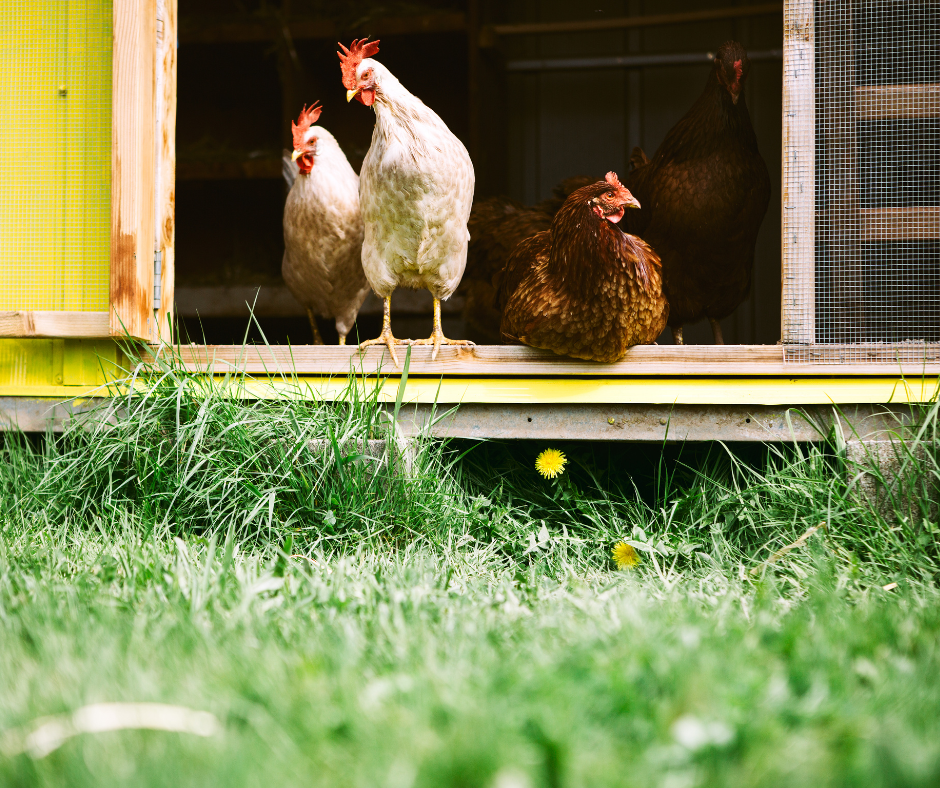Families frustrated by ordinances banning backyard chickens might be astonished to learn that flocks legally thrive in the Big Apple, America’s largest city. Many New Yorkers tend chickens both in backyards and community gardens, encouraged and helped by the New York Chicken Guy, Greg Anderson.
“Chickens have always been allowed in the City. Years ago the State Department of Health declared that chickens and rabbits are pets. This means the citizens of New York City can keep them as long as they are clean and safe. Unfortunately roosters aren’t included since their crowing can reach 130 decibels.,” he said.

Many non New Yorkers have visited densely packed Midtown Manhattan and can’t imagine how even a single chicken can live squeezed amid giant buildings and swarms of people. Actually large areas of the City’s other boroughs of Queens, Brooklyn, Staten Island and the Bronx have tree lined streets and homes with small grassy yards. Chickens live as comfortably in these small yards as in suburbia. Also scattered about the City are community gardens with neighborhood flocks. “No one knows how many chickens there are in New York City, but there’s a flock of about 50 birds in a Queen’s backyard,” said Anderson.
What sets New York apart from other towns is its community garden flocks. About 370 gardens on Park Department land are sprinkled about the huge city. They are managed and maintained by community volunteers who create their governance structure, membership procedure and focus. About 150 other community gardens are owned by land trust organizations. Many were once abandoned urban properties that volunteers have transformed into green islands. All community gardens are peaceful welcoming places where neighbors grow vegetables, tend chickens or just sit in a haven of greenery surrounded by enormous apartment buildings.
Many New York City community gardens have a mission of food and social justice and educational programming. They distribute vegetables and eggs to neighbors through farmer’s markets, food box programs, and food pantries. Much food is grown right inside the City. “New York City has a long history of farming. “The 47 acre Queens County Farm Museum dates back to 1697 and may have the largest chicken flock in the City,” said Anderson.
How did New York City end up with a chicken guy? “When I started working for the City Park and Recreation’s GreenThumb program everyone knew I had knowledge of and loved chickens. Whenever a call came in about chickens I ended up fielding it. After a few months I was informed by my supervisor that I was GreenThumb’s unofficial chicken man. I was asked to help develop the GreenThumb Chicken Academy. It’s a six part program for new chicken keepers. Students just need to be a part of a community garden. Mine’s not a real title, but I love helping people enjoy chickens and care for them properly”, said Anderson.
New York City’s Individual backyard flocks are like those in suburban yards in smaller towns. They are owned and cared for by the home’s residents. Flocks in New York’s community gardens are different. To have a community garden flock residents must file a plan with GreenThumb that includes the design for the coop and run, what vet the group will use in emergencies, how they will purchase supplies and who will care for the birds. Every garden group is a little different. Usually the group owns the chickens and decides who will care for them at different times. Some community gardens allow individuals to own a small flock of their own. “It’s up to the garden group”, said Anderson.
Is keeping chickens in New York City different from tending a flock in a spacious small town suburban yard? In some ways they are the same. Wherever they live chickens need a safe dry place to live, protection from predators, and clean food and water.
About eight million humans live in New York City but there’s still plenty of room for raccoons, opossums, and hawks that enjoy filching a tasty chicken. There are also occasional two legged human predators. New York’s ambience is different from small towns. “Sometimes the noise and lights of the city can be a problem but usually chickens quickly get used to it,” said Anderson.
“Companionship, fresh eggs, and being able to work with neighbors are rewards of keeping chickens,” said Anderson. Caring for the birds and gardens is an outstanding way to both produce food and get to know other people. Gardens and chickens create communities.
People living in New York City are fortunate that their government allows chickens. So are the citizens of Hiawatha, Iowa. Their city council recently joined many other towns and voted to allow small flocks. Unfortunately many towns, including some surrounded by rural farms, still ban chickens. Their city councils should take a look at New York City, Hiawatha and so many other towns where citizens enjoy the benefits of tending flocks.
Want To Keep Chickens But My Town Won’t Allow It?
Don’t be frustrated. Citizens everywhere have successfully encouraged their own town council to change their ordinance to allow families to keep small flocks. Typically homeowners are allowed to keep four to six hens and prohibit roosters and slaughtering chickens.
Need help with ordinance change? Read the Hoover’s Blog ADVENTURES IN ORDINANCE CHANGE. Don’t give up. Change is happening all over the country.